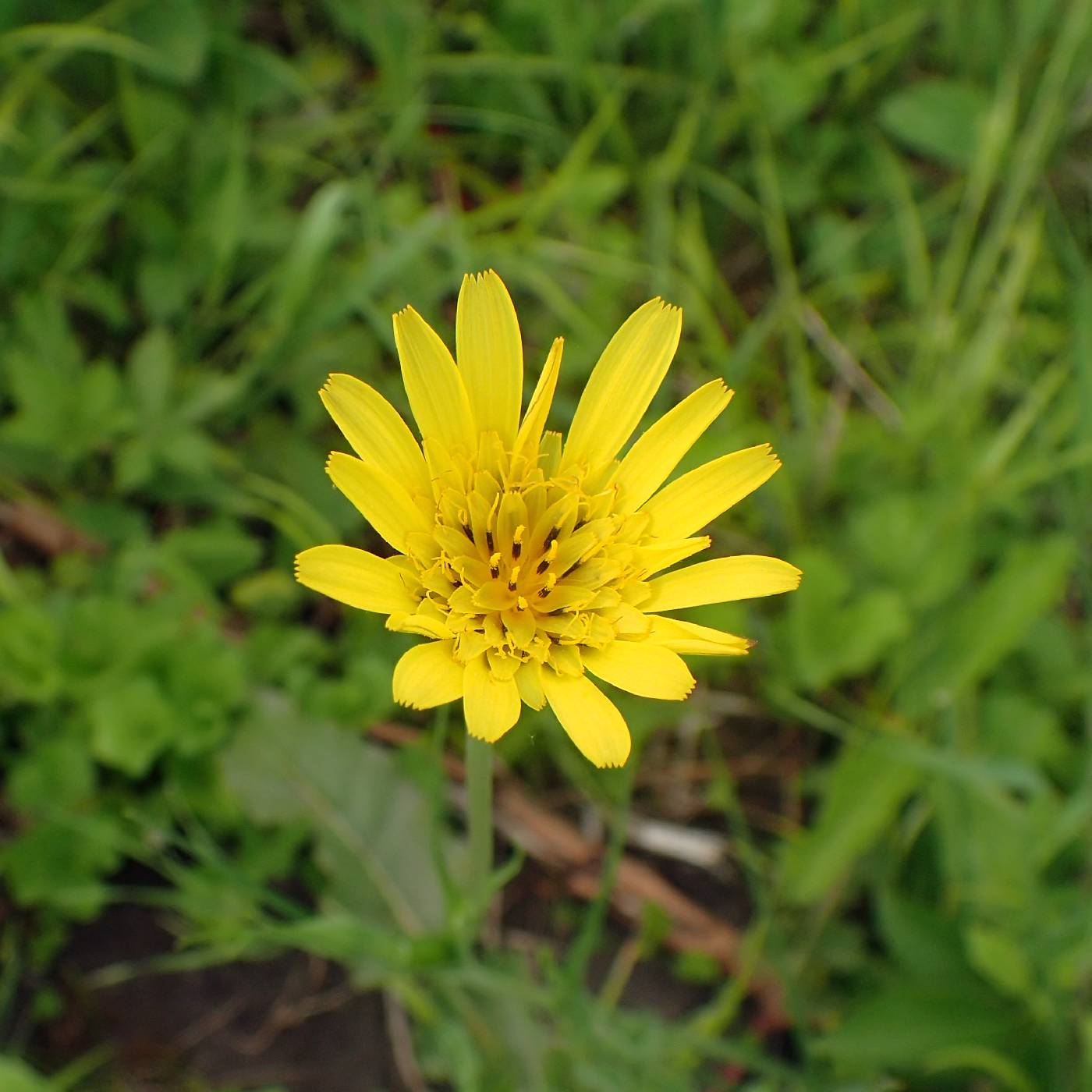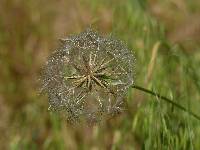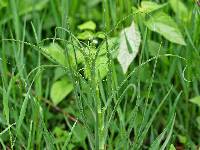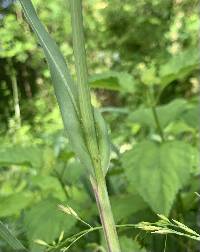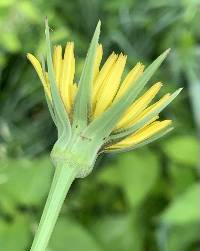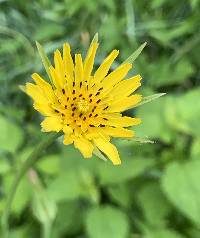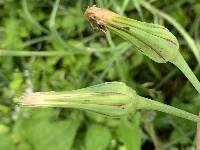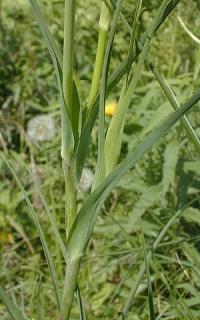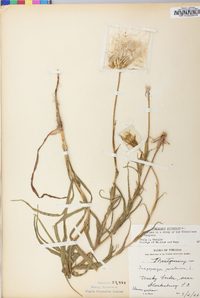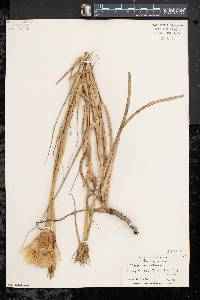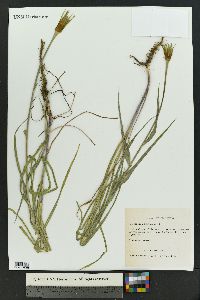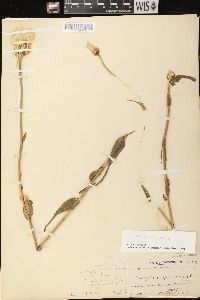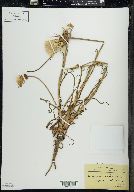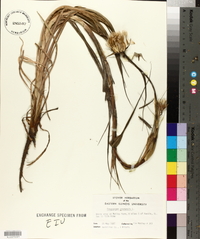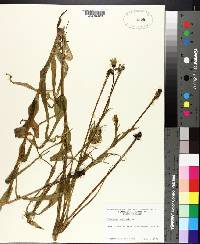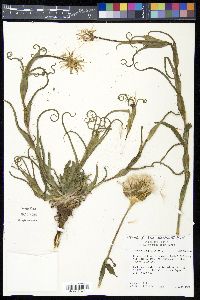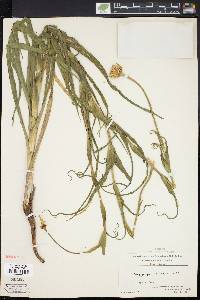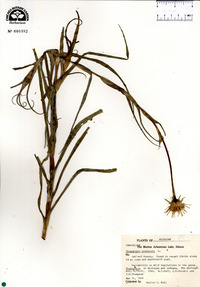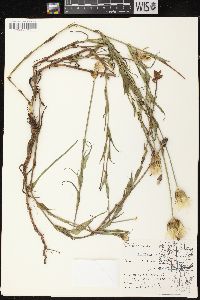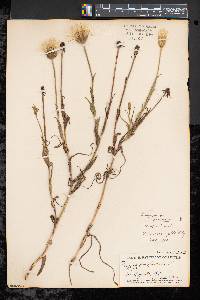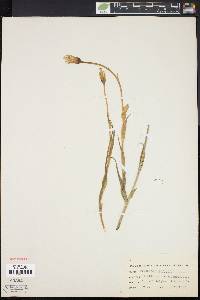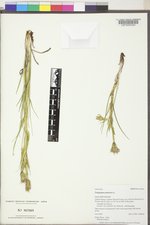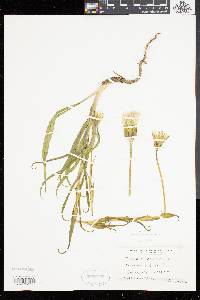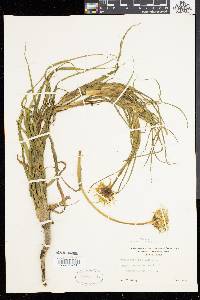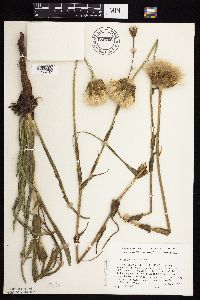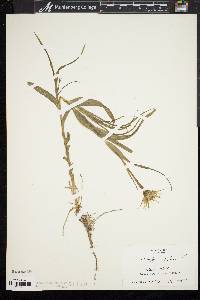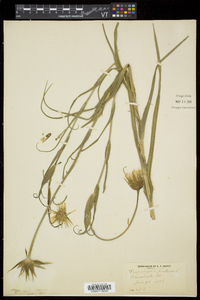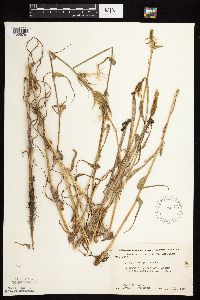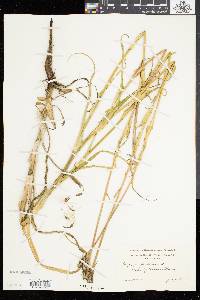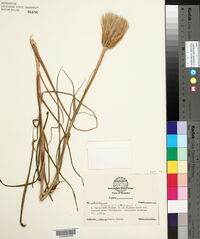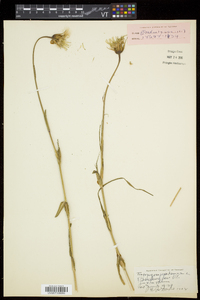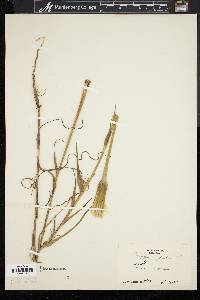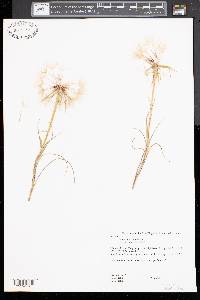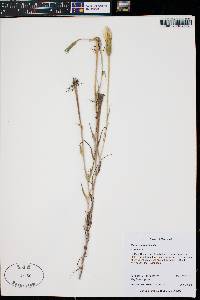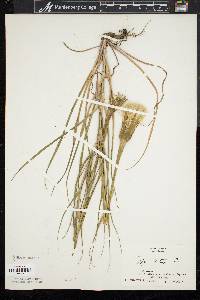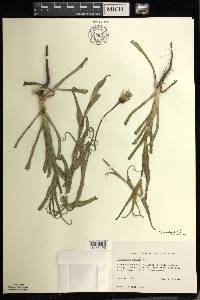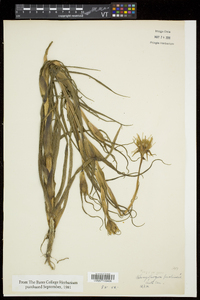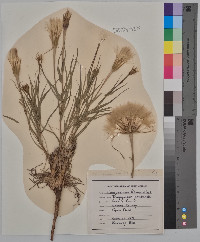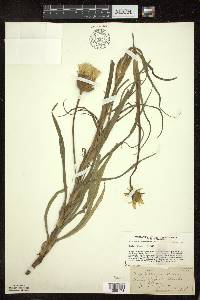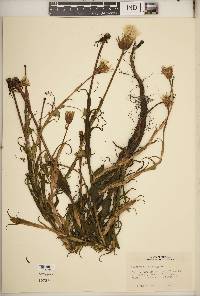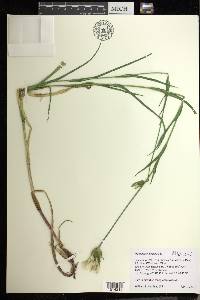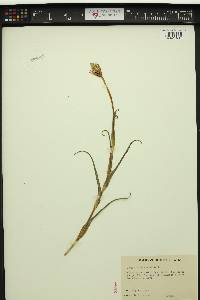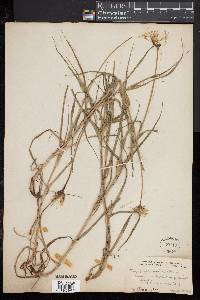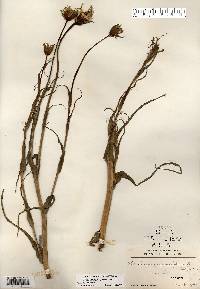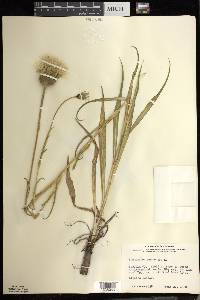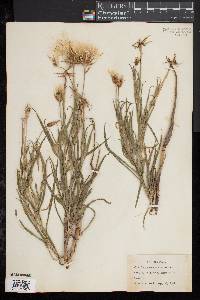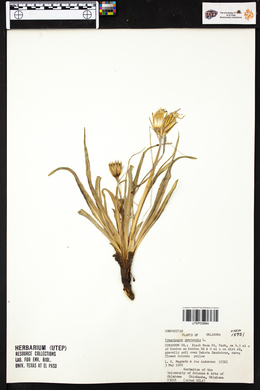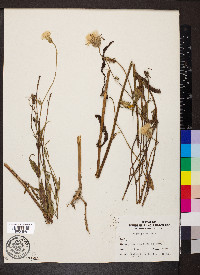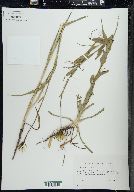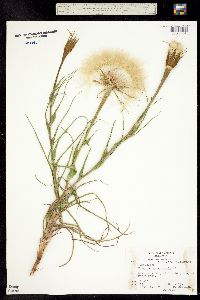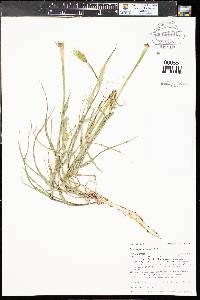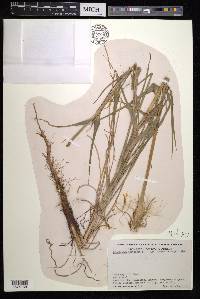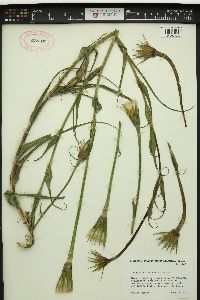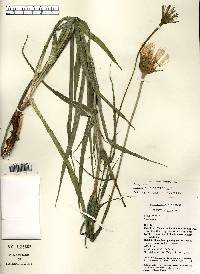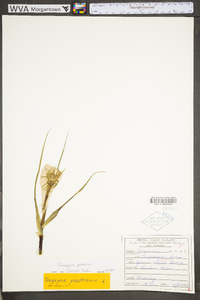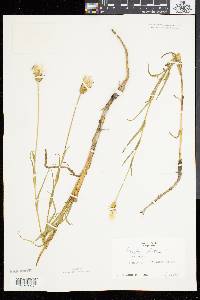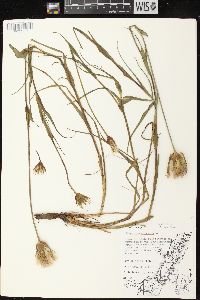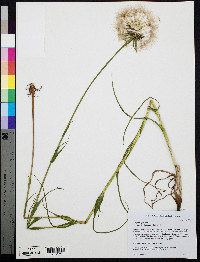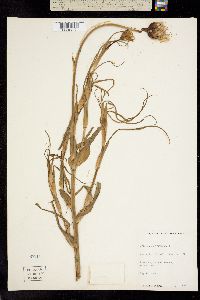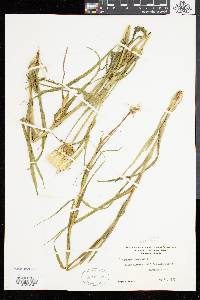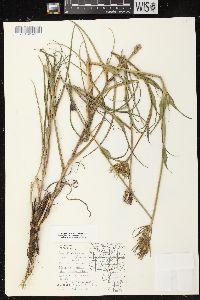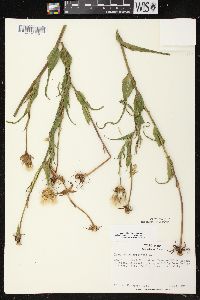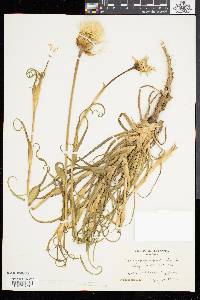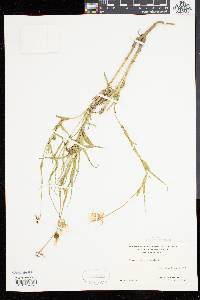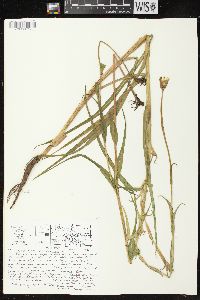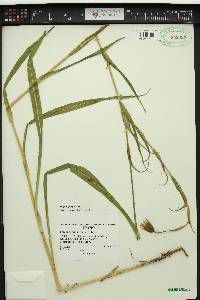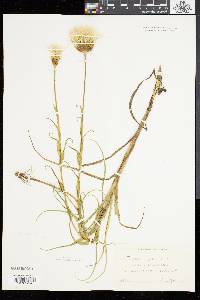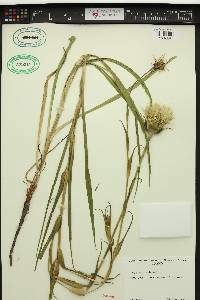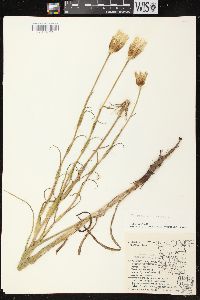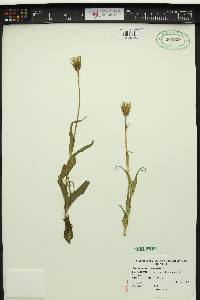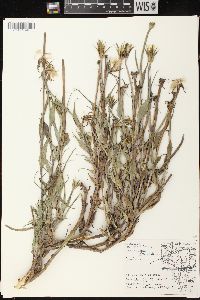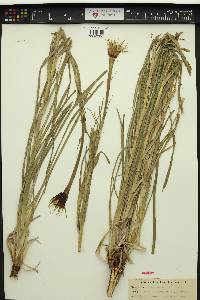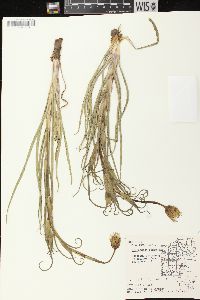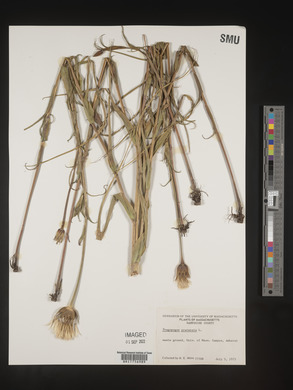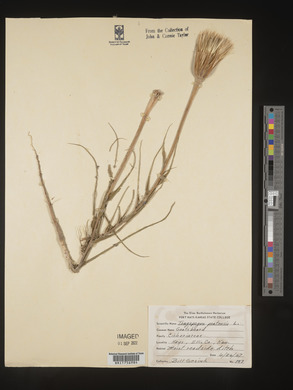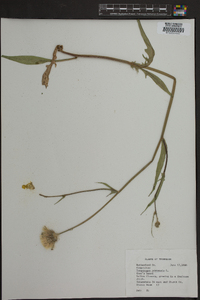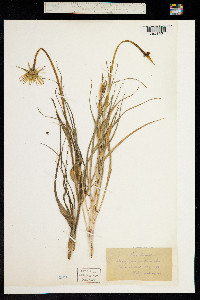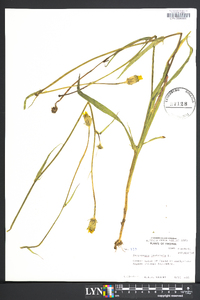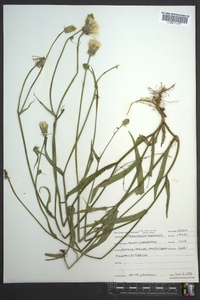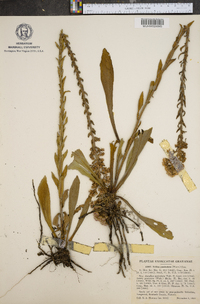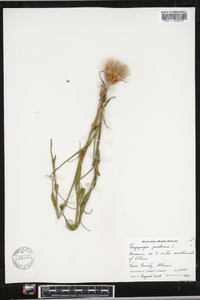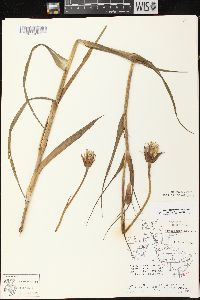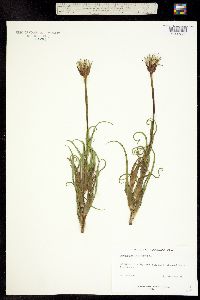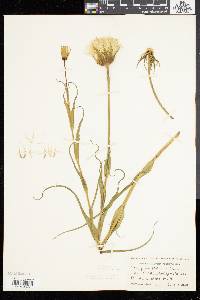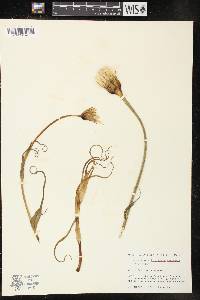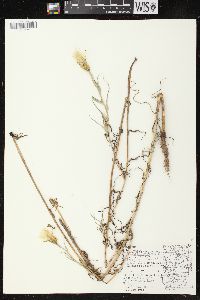Tragopogon pratensis
|
|
|
|
Family: Asteraceae
Jack-Go-To-Bed-At-Noon, more...meadow salsify
|
Plants (15-)40-100 cm. Leaves: apices usually recurved to coiled, faces initially tomentulose to floccose, soon glabrescent. Peduncles usually little, if at all, inflated (at flowering, may be inflated in fruit), initially floccose to tomentulose, soon glabrescent. Involucres urceolate in bud. Outer florets equaling or surpassing phyllaries; corollas yellow. 2n = 12. Flowering May-Aug. Disturbed sites; 10-2100 m; introduced; Alta., B.C., Man., N.B., Nfld. and Labr. (Nfld.), N.S., Ont., P.E.I., Que., Sask.; Ariz., Calif., Colo., Conn., Del., D.C., Ga., Idaho, Ill., Ind., Iowa, Kans., Ky., Maine, Md., Mass., Mich., Minn., Mo., Mont., Nebr., Nev., N.H., N.J., N.Mex., N.Y., N.C., Ohio, Okla., Oreg., Pa., R.I., S.Dak., Tenn., Utah, Vt., Va., Wash., W.Va., Wis., Wyo.; Europe. Tragopogon pratensis is naturalized across much of North America. The circumscription and infraspecific taxonomy of T. pratensis in Europe are debated, and the name T. pratensis may prove to be inaccurately assigned to the introduced populations in North America.
FNA 2006, Kearney and Peebles 1969, McDougall 1973 Duration: Biennial Nativity: Non-Native Lifeform: Forb/Herb General: Herbaceous biennials to perennials, to 100 cm tall, stems hollow, with milky sap, herbage initially floccose to tomentulose, soon glabrescent, plants with fleshy taproots. Leaves: Alternate, grasslike, margins entire, apices usually recurved to coiled, clasping at the base, blades strongly nerved. Flowers: Heads large, ligulate, the outer florets bright yellow, receptacles flat or nearly so, naked, involucres cylindrical or narrowly campanulate to urn-shaped, phyllaries 8-9 in a single series, united at the base, heads solitary on hollow peduncles, these often inflated only in fruit (not in flower.) Fruits: Achenes linear-fusiform, rough to the touch with small, sharp, pointed protrusions, long-beaked and longitudinally ribbed. Pappus of plumose bristles, connate at the base. Ecology: Found in disturbed areas from 50-7,000 ft (15-2134 m); flowering in summer. Distribution: Widely occurring across the United States and Canada. Notes: Good identifiers for this species are the bright yellow ligules, and the 8-9 phyllaries. This species is naturalized from Europe. Ethnobotany: A cold infusion was gargled as ceremonial treatment for throat trouble, and used as a lotion for boils, and the plants are eaten by deer, horses and cattle. Etymology: Tragopogon is drawn from two Greek words, tragos meaning goat and pogon meaning beard, a reference to the feathery hairs when in seed, while pratensis means growing in meadows. Synonyms: None Editor: LCrumbacher 2011 Mostly biennial, 1.5-8 dm; lvs elongate, to 30 נ2 cm, rather abruptly narrowed a little above the base, and tending to have the margins somewhat crisped, cirrhose-recurved at the tip, slightly floccose when young, soon glabrous; peduncles not enlarging in fl and scarcely so in fr; invol bracts typically 8, 12-24 mm in fl, equaling or shorter than the chrome- yellow rays, elongating to 18-38 mm in fr; achenes 15-25 mm, rather abruptly contracted to the slender, relatively short beak, the body not much shorter than in our other spp.; pappus whitish; 2n=12. Roadsides, fields, and waste places, commonly in slightly moister habitats than no. 2 [Tragopogon dubius Scop.]; native of Europe, now widely established in our range and westward. May-Aug. Gleason, Henry A. & Cronquist, Arthur J. 1991. Manual of vascular plants of northeastern United States and adjacent Canada. lxxv + 910 pp. ©The New York Botanical Garden. All rights reserved. Used by permission. From Flora of Indiana (1940) by Charles C. Deam Becoming established in our northern counties along roadsides and railroads and in waste places and fallow fields. …… Indiana Coefficient of Conservatism: C = null, non-native Wetland Indicator Status: N/A |
|
|
|

